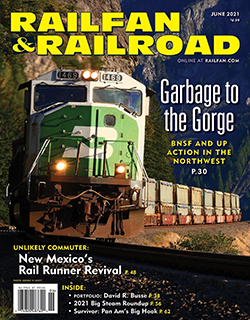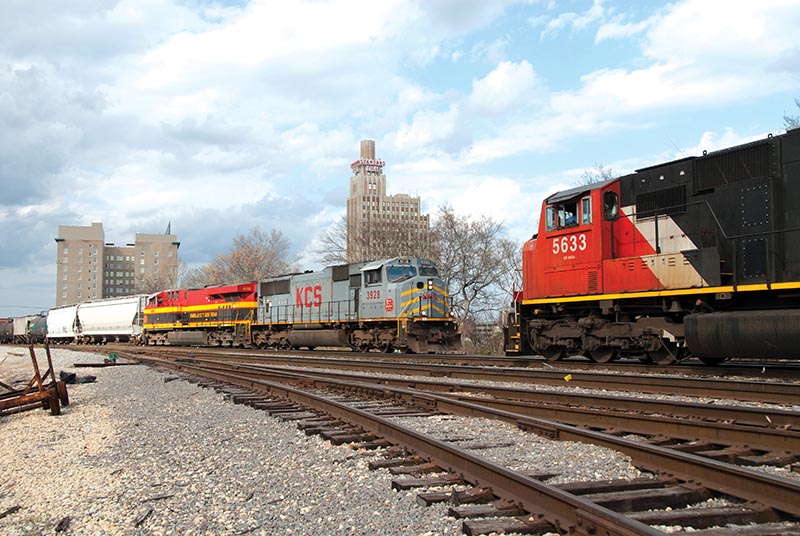 In April, the big news was Canadian Pacific’s $29 billion offer to purchase Kansas City Southern. If approved by the U.S. Surface Transportation Board, the merger would create the first unified railway serving Canada, the U.S., and Mexico, thanks to KCS’ extensive holdings south of the border. Within days, the story became complex when rival Canadian National offered an even higher bid for KCS.
In April, the big news was Canadian Pacific’s $29 billion offer to purchase Kansas City Southern. If approved by the U.S. Surface Transportation Board, the merger would create the first unified railway serving Canada, the U.S., and Mexico, thanks to KCS’ extensive holdings south of the border. Within days, the story became complex when rival Canadian National offered an even higher bid for KCS.
Throughout the process, rumors have abounded. Some claim that Canadian Pacific was making significant cuts to its operating budget in hopes of saving money for the KCS purchase. CP officials claimed, with no evidence at all, that the STB would never approve a CN-KCS merger because of CN’s control of Illinois Central, the self-proclaimed “Main Line of Mid-America.” Still others claimed that if CP did not merge with KCS, it would be forced to find another merger partner, possibly setting off a long chain of mergers that might reduce the North American railway map to just two major carriers.
We’ve been here before, and with Canadian Pacific, no less. Almost six years ago, CP announced its intentions to merge with Norfolk Southern. That proposal died — CP was never able to offer enough money for NS stockholders to bite. A little over a year later, CP’s CEO, E. Hunter Harrison, left the company to run CSX. Was this a move made to prepare the latter company, long NS’ rival, for a merger with CP? If so, such efforts surely died when Harrison, already quite ill, himself died 11 months later.
What all this merger hoopla adds up to is an illustration of how nonsensical the U.S. rail network remains. Let’s say you want to ship a single carload of machine parts from Portland, Maine, to a custom steel fabricator in the suburbs of Portland, Ore. First, our car will originate and travel via the regional Pan Am Railways, itself presently proposed for acquisition by CSX. Our car of gears will then transfer to CSX in Massachusetts, or to NS in New York state. One of those carriers will in turn carry the carload of machinery to the Midwest, probably to Chicago, where it will be handed off to Union Pacific as the shortest route. After traveling across the American West, the car will eventually arrive in Portland, Ore. There, it will take another two days to travel across the city, the first to interchange with short line Portland & Western, and then a second day to be picked up and delivered by the local switch job on the suburban west side. Our assemblage of sprockets and gears has encountered more friction in motion inside a boxcar than it will in daily service assembling custom structural steel parts.
Is this the 19th century? Do we really still treat the states along the Mississippi River as a kind of formal barrier to travel? In 1869, when politicians and investors celebrated the completion of the nation’s first Transcontinental Railroad, they were playing make-believe. Our neighbors to the north have had a sea-to-sea transcontinental railway since the completion of CP in 1885. Here in the U.S., we still don’t have that. The days of coast-to-coast carload through freight routed to avoid terminal delays have long since passed into American history.
Generations of over-construction, hyper-competition, rivalry, and suspicion have helped build our current situation. For more than 20 years, no U.S. Class I has dared propose a merger with another, paralyzed out of fear of making the wrong choice, of picking the wrong dance partner, then being stuck with the results. Thus we have nationwide airlines, parcel carriers, phone companies, and even a nationwide passenger rail system, but still no coast-to-coast freight railroad. For now.
—Contributing Editor Alexander Benjamin Craghead is a transportation historian, photographer, artist, and author.


